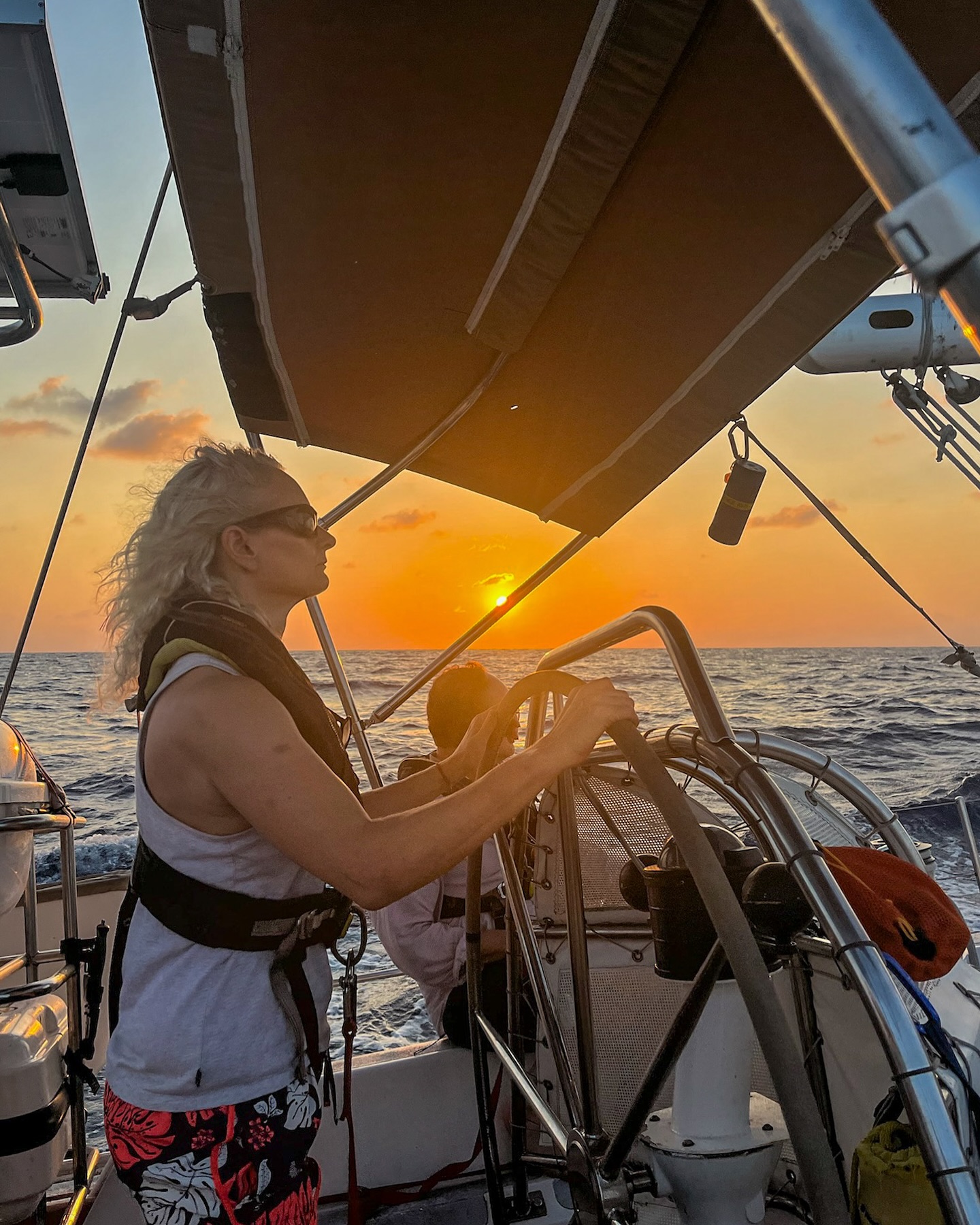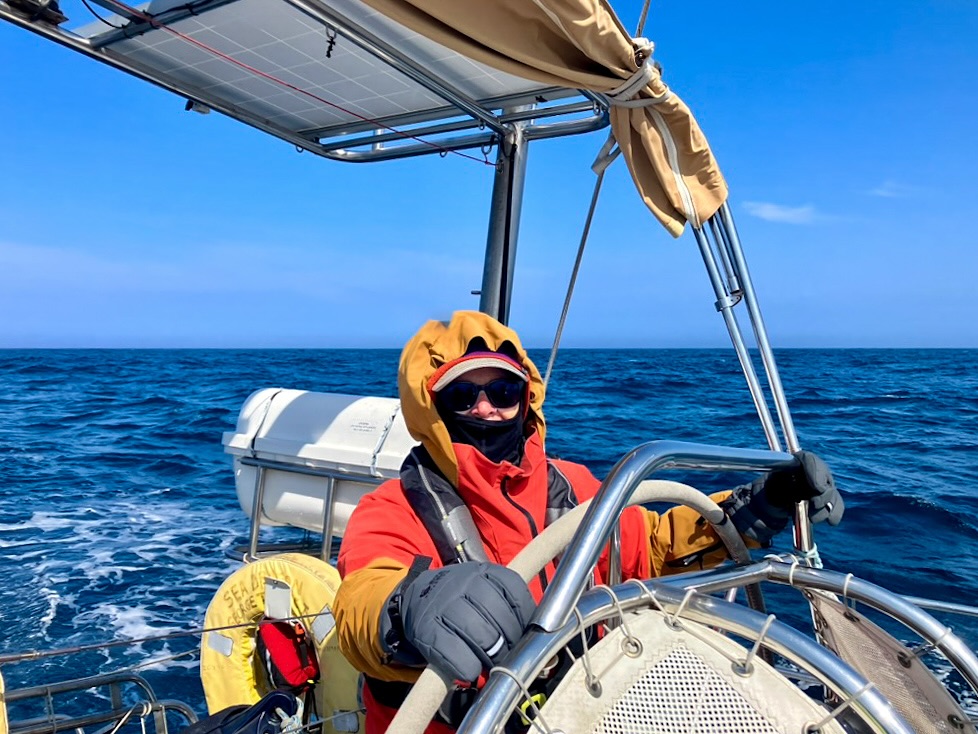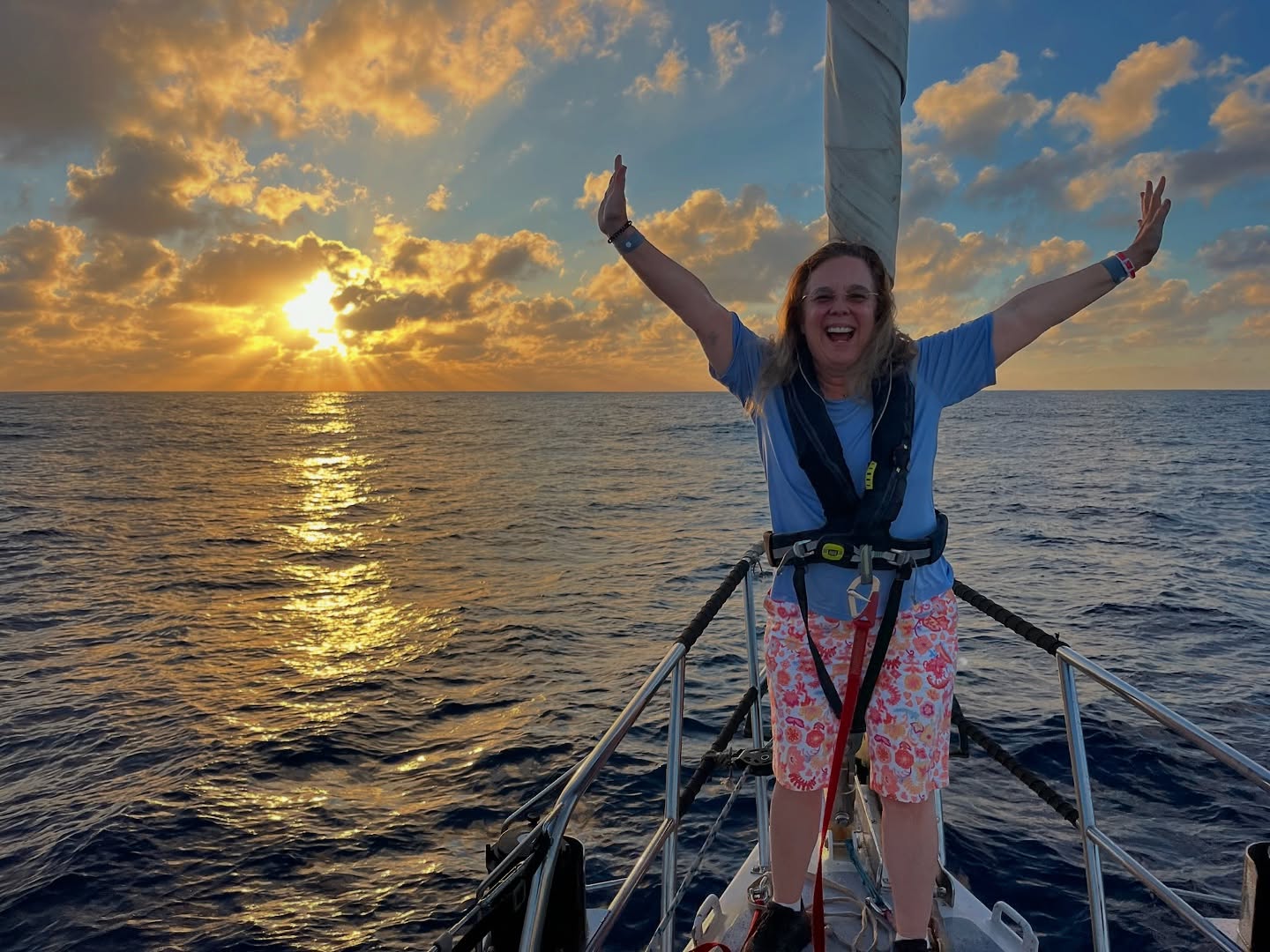Last night, I woke up at 3am ready for my watch. But when I looked out of the window, I saw with surprise buildings and trees. Where have we docked, I wondered, as the whole room rocked back and forth.
We disembarked Sea Dragon three days ago, and waved goodbye to the most beautiful of homes. Since then, I have woken religiously in the middle of the night and it’s taken me a good while to realise that no, I am no longer at sea. And with this comes a deep thwack of regret. I think all of us were subdued as we glided into Gothenburg harbour in the early evening darkness on Wednesday. After the crew had packed up the sails by moonlight and wrapped them snugly in their casings, Belinda Braithwaite prepared us a meal of perfectly seasoned Icelandic fish and together we crowded around the table to share a final feast and consider the last two weeks. Here are some impressions from the crew…
Rodrigo Olson – Skipper: “We decided to take on this trip because it took us to an exciting destination, a place where I was sure we would see a lot of whales. It was a challenge to sail so far up north and experience totally different kinds of weather. At the beginning I was apprehensive, because I didn’t know what to expect. I knew it might be very rough, but I was hoping for periods of good weather. Luckily, what we got was amazing. Conditions were generally very mild, particularly at the beginning, which made it easy for the crew. I see the trip as being divided into three parts. The first was before we left Iceland, where we endured the agony before leaving – unsure about the unpredictable weather and hoping against hope for a good window in which to set sail. When we got it, this marked the beginning of the second part of the adventure, and by far my favorite. With perfect weather conditions, we left Iceland and sailed around the corner, following the south coast down to the Faroes. I couldn’t have asked for anything better – 24 hour light, great ambience on the boat, and whales. It was true wilderness. Then, when we left the Faroes, things became much more technical. We had to concentrate on the sailing, as there were difficult forecasts to deal with, fog, rain, wind from the front and back – overall changeable conditions. I very much enjoyed having artists on board. Artists see things so differently from scientists, and it made for an exciting and refreshing adventure. It was a great joy to show everyone all different aspects of life at sea. For me, it is so natural and it was lovely to see life on board through new eyes. Everyone worked hard, never complained and made the whole trip a joyful experience.”
Oli Thorsteinsson – Boat captain from Iceland: “It was a lovely trip. Lots of different kinds of weather, and it was amazing to meet all the crew. Amazing to see people so enthusiastic about steering and learning, and doubly amazing to see those whales. I liked that there was diversity – different sun, rain, we stood outside and got beaten up by the wind and then the next moment the sun came out and we were in shorts! Some parts were rough, but most was delightful.”
Belinda Braithwaite – Filmmaker and honorary chef: “It was an amazing trip, and a highpoint for me as a filmmaker was the light. It was beautiful. Sunsets, sunrises and moonrises so close together, and it just felt like paradise. I was however fairly shocked that we didn’t see more whales. For me, going between Iceland and Sweden, it felt like a desert. We saw some dolphins, birds, whales… but not anywhere near as many as I would have expected. And if you compare that to the number of trawlers, fishing boats and oil rigs… its pretty sad. And I wonder what the drop in numbers is due to – fishing, hunting or plastic pollution?”
For the artists, our litany of highs and lows continued through the night. It was a great pleasure to share this voyage with so many creative thinkers, each of whom saw the world – and the experience – from a slightly different angle. The quality of light, changing gradually the further south we sailed, and the eventual return to darkness in the last few days before Sweden has been documented with pencils and watercolours, songs and poems, GoPros and antique cameras. The pilot whales, who came when we most needed them and gave us a show none of us expected, will take centre stage in whatever stories are told in the coming months and years. Midnight watches, coffee-fueled, cold, wet and nauseous; custard cream induced highs; orange moons and ice blue waves. The wilderness. For me, it was all about the wilderness – the feeling of the wind on my skin, the smell of sea salt and the creaking of the sails taking us forwards. I can’t wait to see what will be produced by our crew of artists, and this is some consolation for our return to land. Over the coming months, as ideas incubate, we will bring our crew back to the gallery in Brighton and invite you all to join us, to talk about ocean conservation, whales and marine life, oil fields and energy consumption, life at sea and entering the wilderness.
I’ll end with an account of the Faroes, by far the most wild and isolated place we visited. This is from Jesse Horton, our first mate, an avid environmentalist, explorer, artist and – of all things – submarine captain:
“Arriving anywhere by boat is pretty amazing, because you get a perspective of distance and place. This form of travel can seem antiquated, but it prepares you for arrival like no other. As we sailed into the Faroes, we were surrounded by fog and could barely see the hands in front of our faces. Then, bam, it cleared and there were these islands. Cliffs, caves, waterfalls… it couldn’t have been more incredible. I made an effort not to do much research about the Faroes, and when I set foot on land I had little to go on apart from the few negative images I had seen. But I started walking, and walked until the fences ran out. I like to feel the ground change under my feet, and see the world change around me. I walked through and out of the town, then up to the top of the mountainside, where I was surrounded by standing stones, birds, mountain lakes. When I reached the highest point, I met a father and son, hiking in the same direction. We got chatting, and when they found out I only had a day on the island, they insisted that they take me not only back to the harbour in their car, but across to the other side of the island to visit an ancient church. At what felt like the very end of the world, I got a taste of island hospitality – similar to the kind of island hospitality that I grew up with. In a strange way, however different they are and however far apart, all islands feel the same.”
– Laura Coleman, ONCA Trust, July 19, 2014

























